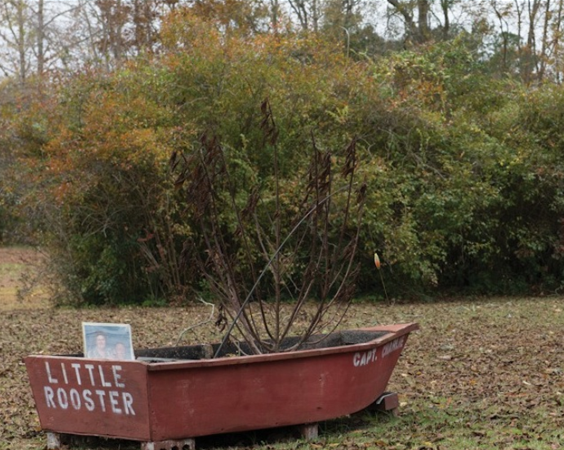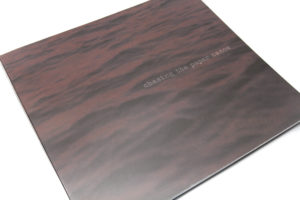
Chasing the Paper Canoe is the inaugural publication of the Athenaeum Press. The book and accompanying digital publication paint the picture of Nathaniel Bishop’s journey down the Waccamaw River more than a century ago. The project investigate how the landscape has changed, what has stayed the same, and investigate how the river has shaped this region.
The photography book contains stunning photographs of the Waccamaw river and the surrounding people and landscapes. The book includes brief quotes from Nathaniel Bishop's Voyage of the Paper Canoe (1878) paired with gate-folded panoramic shots of the river across the seasons. The digital compendium combines archival materials and original interpretations of Bishop's observations on the cultures within the Reconstruction south.
Note: As of July 2020, the augmented reality app Aurasma/HP Reveal was discontinued. We are working on new ways of bringing the augmented reality portion of this project to you. Please stay tuned to our social media channels for updates.

The Project
The project is the culmination of a year’s collaboration between students and faculty at Coastal Carolina University. Chasing the Paper Canoe portrays the culture, desolation, and stoic beauty of the Waccamaw River. Within its pages, readers find the historic rice fields contrasted with the bankside home construction; the weathered waterfront of Georgetown and portraits of modern fishermen. It is a true portrait of what Bishop described as the “most crooked waterway.”
The project takes readers on a journey across water, history, and form. Throughout the printed book, readers can see the stunning photographs come to life with a streaming video, through a feature called augmented reality. Both photographs and multimedia components were designed and produced by students in Coastal Carolina University’s pre-professional studio.
This book is a great read for historians, river enthusiasts, or those looking for a glimpse into cultural and natural shoreline along the Waccamaw’s black waters.
History
The year was 1874. Nathaniel Holmes Bishop, a 37-year-old explorer and adventurer slid his canoe into the Saint Lawrence River in Quebec City. He would travel through Quebec, along the east coast of the United States, and across Florida to the Gulf of Mexico. He traveled by land only when necessary to reach another watercourse. Bishop later published an account of his adventure, The Voyage of the Paper Canoe: A Geographical Journey of 2500 Miles from Quebec to the Gulf of Mexico during the Years 1874-5. In Chapter XI of his book, “From Cape Fear to Charleston,” Bishop relays his journey down the Waccamaw, which he described as “this most crooked of rivers.” In 2012, students and faculty of Coastal Carolina University identified and photographed places Bishop mentions in his narrative.Th is volume revisits with words and images Bishop’s voyage through the Waccamaw region, and explores the changes the years have wrought.
Extended Interview with Dr. Eldred “Wink” Prince
Contributors
Special thanks to Richard C. Goldburg, Boat Captain; Samuel L. Gray, Jr., Boat Operations Manager; Christine Ellis, Waccamaw River Keeper; Ocean City Library, Toms River Branch, Toms River, New Jersey; and Aurasma, Inc.
Students
- Tracy Fish, Photographer
- Tim Hodge, Photographer
- Marcello Gorafalo, Designer
Faculty
- Scott Mann, Design and Production Manager, The Athenaeum Press, Assistant Professor of Visual Arts
- Jen Boyle, Digital Manager, The Athenaeum Press, Associate Professor of English and New Media
- Easton Selby, Assistant Professor of Visual Arts
- David Kellogg, Assistant Professor of English
- Eldred "Wink" Prince, Jr., Professor of History, Director, Waccamaw Center for Cultural & Historical Studies



